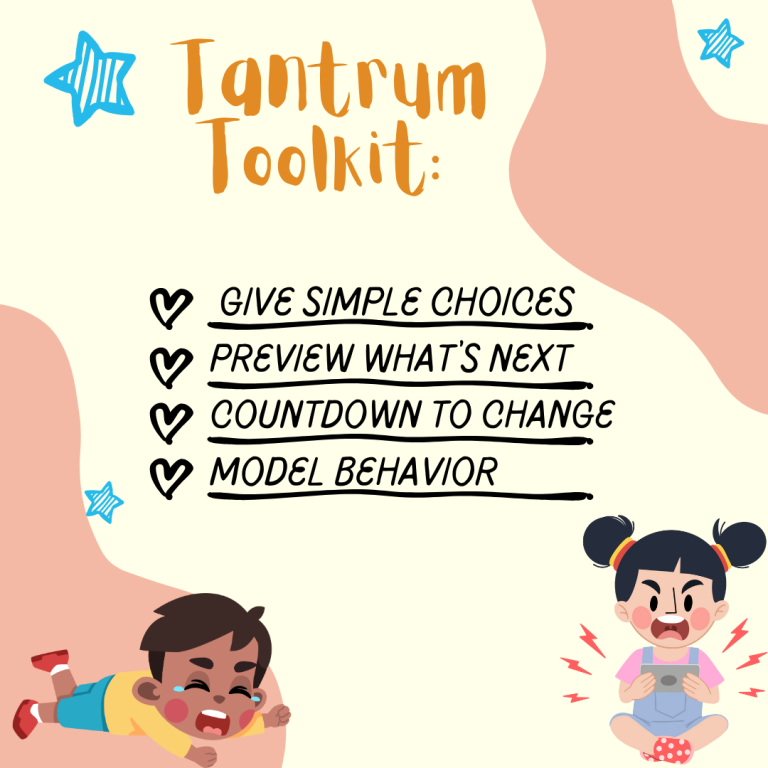
Building a Tantrum Toolkit for Young Children
By Team Therapy Smarts
Have the “terrible twos” seemed to have lasted longer than expected? When challenging behavior presents itself— particularly in younger children, who are still learning to emotionally regulate — many parents search for answers, finding conflicting, and sometimes contradictory advice. What is the best way to address your child’s needs and navigate the shifting tides?
Some meltdowns may be noticeable a mile off, while others seem to come out of nowhere. It can be particularly difficult at the moment to determine why your child is behaving in a specific way, and there could be a number of different factors involved.
We know parents get a lot of advice — and that they know their child better than those offering it. Therefore, in our capacity as pediatric therapists, this blog is designed first and foremost to provide the “why” behind challenging behaviors, so that every parent can make the decision they feel is best for their family.
Transitions
Whether it’s putting down a toy to come to dinner, or getting ready for bed, transitions can be notoriously difficult for young children. The specific heart of why your child struggles with transition may vary.
For example, they may not want to stop doing something they enjoy in order to do something they decide is less fun. Others dislike a change in schedule, such as an unexpected doctor’s visit. If they aren’t finished with something like a drawing or a TV episode, this can also contribute to struggles around transitioning.
If your child struggles with transitions, here are a few options that may help them move from one activity to the next:
Previews and Countdowns: Before a transition, make sure you are giving your child plenty of advanced warning about the shift in your day. Tell your child how long they have left, and describe what will happen next. (i.e. “You have ten minutes left on the playground. Then we will get in the car and drive back home.”)
Music Eases Transitions: Songs can help to make transitions more fun for children. An easy example is the “clean-up” song. By turning tasks like cleaning up or brushing your teeth into a game, it may be easier for children to move from one activity to the next.
Give a Choice: In the hustle and bustle of routine, kids like to have a measure of control — where you can, consider giving them a choice. This might be a choice between two outfits, or choosing which chore they would like to complete first. Having a say can help involve them in the process of getting ready or going to a specific activity.
Emotional Regulation
Some young children may choose to act out because they are struggling to regulate their emotions. Every child has a different timetable when it comes to learning how to self-regulate. Fortunately, there are a number of ways that parents can help their children to regulate their emotions safely and effectively.
Model Behavior:For younger children who are still learning to express themselves, their parent can serve as a great model for how to behave. Consider practicing with a small frustration— first, tell your child how you feel, then describe what you’ll do to calm down (i.e. play a favorite song, or take a few deep breaths). Once you’ve done that, discuss how you can make the situation better.
Talk it Out: Putting words to our emotions is one of the first ways that we deal with them. How you do this will vary depending on how old your child is. For a younger child, you might demonstrate how to use their fingers to express how they feel on a scale of one to ten. For an older child, they may be able to use words. In any case, try to avoid talking it out in the middle of a meltdown, when communication is.
Quality Time is Key:Having a space to unwind and destress at the end of the day is critical for you and your child. Aim for at least five minutes with a young child. In this space, rules should be put on the backburner, and quality time should not be contingent on a child’s good behavior.


